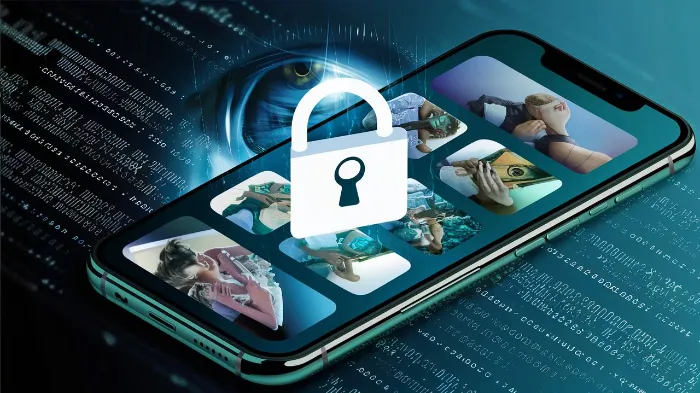As AI technology advances, it brings not just new possibilities but also serious privacy concerns. Tools like “Undress AI,” which can manipulate images to simulate nudity or compromising scenarios, are a stark reminder of the potential for abuse. The misuse of these tools can lead to significant emotional and reputational harm, making it more important than ever to protect your personal privacy. Here’s how you can take effective steps to guard against such AI-powered threats.
Understanding the Threat: What Is Undress AI?
Undress AI refers to software that uses artificial intelligence to digitally manipulate images, making it appear as if the subject is undressed or in a vulnerable state. This kind of technology poses several risks:
- Invasion of personal privacy: Photos shared online can be altered without your knowledge or consent, leading to violations of your personal space.
- Risk of harassment or blackmail: Deepfake pornography or manipulated images can be used to harm your reputation, embarrass you, or extort money.
- Emotional distress: Even if fake, the distribution of altered images can cause real emotional damage and anxiety.
Taking steps to protect yourself against these risks is not only wise but necessary in a world where technology is rapidly evolving.

1. Control What You Share Online:
The more you share, the more you expose yourself to risks. It’s crucial to be mindful about what images and personal information you put on the internet.
- Strengthen privacy settings on social media: Make your profiles private so that only trusted friends can see your posts and photos. This is particularly important on platforms like Facebook, Instagram, and TikTok.
- Think twice before posting full-body or personal photos: The more detailed and clear an image is, the easier it is for AI to manipulate it. Consider sharing fewer personal images or choosing photos that don’t clearly show your face or body.
- Review your social media history: Go back and delete old photos or posts that could be exploited. It’s a good habit to regularly clean up your digital footprint.
2. Watermark Your Photos for an Extra Layer of Protection:
If you need to share images online, adding a watermark can deter potential misuse.
- Make watermarks prominent but not intrusive: Use a watermark that covers a portion of the photo without ruining its quality. It can be a faint logo or text that’s difficult to remove.
- Add filters or slight distortions: Simple alterations like color changes or minor blurs can make it harder for AI tools to convincingly manipulate the image.
3. Monitor Your Online Presence Regularly:
Don’t wait until you hear about a problem from someone else. Be proactive in monitoring your digital presence to catch any potential misuse quickly.
- Use reverse image search tools: Services like Google Reverse Image Search and TinEye allow you to upload a photo and see where else it might be appearing online.
- Set up alerts for your name and image: Tools like Google Alerts can notify you if your name or related keywords pop up online. While it won’t detect every image misuse, it can catch instances where your identity is being mentioned.
4. Respond Quickly to Misuse with DMCA Takedown Requests:
If you find that your images are being used inappropriately, act fast to get them taken down.
- File a DMCA takedown request: The Digital Millennium Copyright Act allows you to ask websites to remove copyrighted material. You can submit a request directly to the platform hosting the content, such as Facebook, Instagram, or a web hosting service.
- Report to the platform where the content is found: Major platforms have dedicated channels for reporting inappropriate content. Don’t hesitate to use these mechanisms to demand the removal of manipulated images.
5. Use Tools That Detect AI Manipulations:
While Undress AI can be used to manipulate images, other AI tools can help detect these manipulations.
- Leverage AI-based monitoring services: Some companies offer tools that continuously scan the internet for any misuse of your images. Services like Sensity and Deepware can help identify deepfakes or altered images.
- Deepfake detection software: If you suspect a photo or video of you has been manipulated, there are tools that can analyze the content and determine if it’s fake. Knowing the content is altered can help you respond more effectively.
6. Advocate for Digital Privacy Laws and Stronger Protections:
Regulations surrounding AI technologies are still catching up, but you can be part of the change.
- Support laws that protect against non-consensual image manipulation: Advocacy for privacy laws and digital rights can help bring about stronger protections against the misuse of AI technologies.
- Raise awareness in your community: Educate friends and family about the risks and encourage them to adopt privacy best practices. The more people understand the threat, the stronger the collective push for change.
7. Use Privacy-Focused Digital Practices:
It’s not just about photos; your overall digital habits play a role in keeping your private life secure.
- Choose browsers and search engines that prioritize privacy: Browsers like Brave and search engines like DuckDuckGo are designed to limit tracking, making it harder for malicious actors to collect your data.
- Regularly update your devices and apps: Keeping software up to date can help protect you from vulnerabilities that hackers or malicious AI could exploit.
- Use strong, unique passwords: A password manager can help you create and store unique passwords for every site you use, making it harder for unauthorized users to gain access to your accounts.
8. Consider Legal Action if Necessary:
When AI-generated images are being used against you in harmful ways, legal action might be an option.
- Consult a privacy attorney: If your images have been used without your permission, legal professionals can guide you on the steps you can take to hold perpetrators accountable.
- Know your rights under local and international laws: Different countries have different regulations regarding image rights and privacy violations. Understanding your legal options can empower you to take action if needed.
9. Push for Greater Accountability from Tech Companies:
Tech companies often have a role in perpetuating or stopping privacy violations.
- Call for ethical AI development: Tech companies should consider the ethical implications of their AI tools. Support initiatives that push for responsible AI use and clear standards around privacy.
- Demand transparency in how AI tools are being used: Users should know when AI tools are being deployed on social media platforms or other services to detect content that violates policies.
Conclusion:
Protecting your privacy from threats like Undress AI involves more than just basic caution—it requires a proactive approach and a willingness to adapt to new technologies. By controlling your online presence, using tools to detect misuse, and advocating for stronger digital rights, you can significantly reduce your exposure to AI-powered privacy threats. Stay informed, be vigilant, and take action when necessary to ensure your digital life remains as secure as possible.

My name is Augustus, and I am dedicated to providing clear, ethical, and current information about AI-generated imagery. At Undress AI Life, my mission is to educate and inform on privacy and digital rights, helping users navigate the complexities of digital imagery responsibly and safely.
